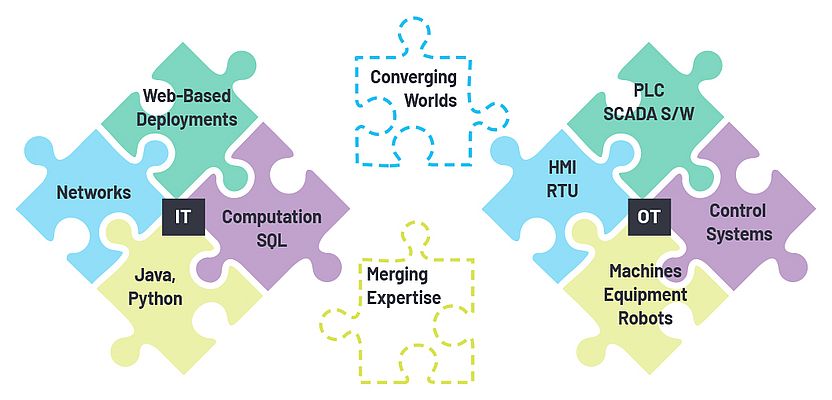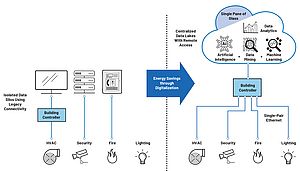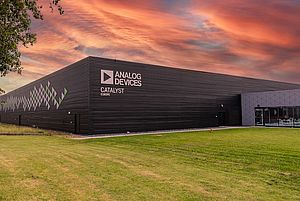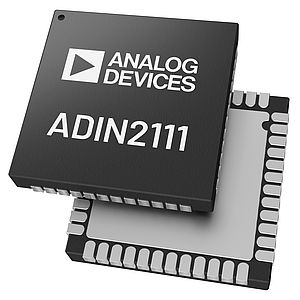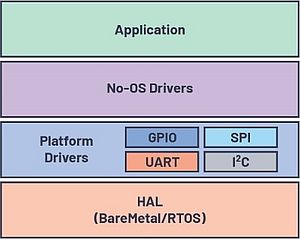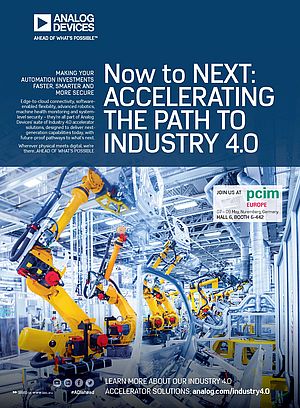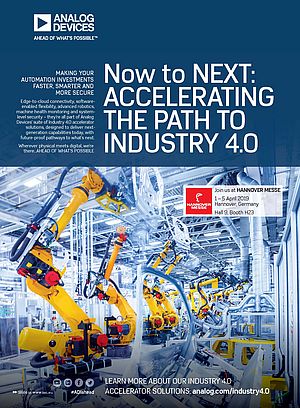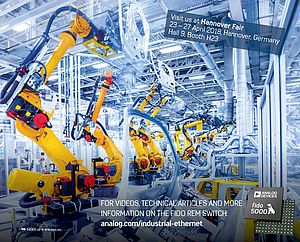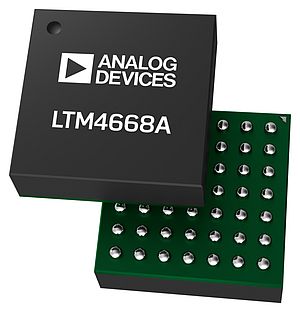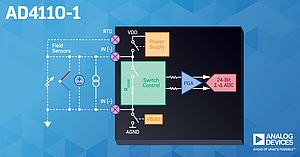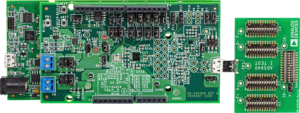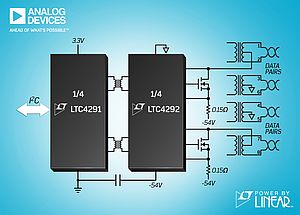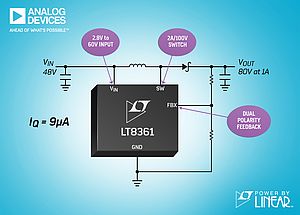With connectivity being central to the Industry 4.0 vision, then three things must become a reality to deliver a truly connected enterprise. Firstly, the higher-level information technology (IT) or enterprise infrastructure must converge with the plant floor control network. Secondly, the various networks or manufacturing cells currently in existence on factory floors must all co-exist and interoperate. Thirdly, we need seamless, secure connectivity across our process environments, from the edge of the process to the enterprise cloud.
To address these challenges, we need to adopt a foundational networking technology that can support the goal of interoperability, expandability and reach. Ethernet emerges as the ideal solution, being a well understood technology with extensive deployments. Offering high bandwidth and enabling fast commissioning, it is also deployed extensively in the IT infrastructure of all manufacturing environments.
However, standard Ethernet is not a viable solution for industrial control infrastructure given the need for real time operation. Operational technology (OT) control networks need to ensure that the message being communicated is delivered when and where it is needed to ensure the correct operation of the task or process at hand. The TCP/IP protocol for routing traffic does not inherently guarantee this level of deterministic performance.
As a result, industrial ethernet has emerged as the technology of choice at the control level of the operating technology. The goal is to enable seamless connectivity not just between the IT and high-level OT networks but right down through the various layers of the factories OT network to the end node sensor. Today, complex, power hungry gateways are required to enable connectivity from the lower levels of the OT network, to ethernet at higher layers, where a converged IT/OT network is required. Having a plant wide interoperable automation network based on Ethernet would eliminate the need for these gateways, thereby simplifying the network itself.
With determinism in packet delivery and timing guarantees a mandatory requirement for control applications, many vendors undertook efforts to provide real-time protocols suitable for OT networks. A solution is needed that enables different manufacturing cells running different protocols to coexist and share the network in a way that will guarantee their control traffic is not compromised.
TSN is the answer
The answer lies in Time Sensitive Networking (TSN), a vendor-neutral, real time Ethernet Standard based on IEEE802.1 specification. As the name implies TSN is focused on Time. This standard transforms standard Ethernet communication into one that provides timing guarantees for mission-critical applications. It is designed to ensure information can move from one point to another in a fixed and predictable amount of time.
In this way, TSN provides guarantees of timely delivery. For the communication to be predictable, devices on the network must have a shared concept of time. The standard defines a means to transmit certain TSN ethernet frames on a schedule, while allowing non-TSN frames to be transmitted on a best effort basis. In this way TSN enables the coexistence of real-time and non-real-time traffic on the same network. Because all devices share the same time, important data can be transmitted with low latency and jitter at up to gigabit speeds.
The goal is a unified converged network, so different protocol stacks can coexist on the same network infrastructure. TSN is the toolbox of standards that unifies the communication, delivering interoperability between vendors.
Extending to the Process Edge
Our final and perhaps most impactful change is the ability to enable seamless connectivity from the edge node to the enterprise cloud in Process Control Applications. To date connectivity to the edge has been limited by the existing 4 to 20mA or fieldbus technologies available. These are hardwired point to point connections in many implementations, restricting the flexibility of the network to evolve & grow overtime. These non-ethernet based communications to the field, encounter several challenges.
These challenges have necessitated the development of the IEEE 802.3cg-2019™ standard for 10BASE-T1L, full duplex communication. This standard has recently been approved and specifies 10Mbps full duplex communication with power over a single twisted pair cable, up to 1km in length. Data will now start out life in the sensor as an Ethernet packet and traverses the OT and IT infrastructure as such, there is no need for translation (which causes, delays, consumes power and creates a cost overhead).
What’s Available Today?
New robust, low latency, low power physical layer technology combined with scalable switch fabrics are required to support the evolution of our automation networks. Being at the forefront of Industrial Ethernet, Analog Devices has leveraged its rich automation domain expertise and advanced technologies to develop a new portfolio of solutions, designed to ensure time critical data is reliably delivered throughout industrial applications, assuring seamless connectivity and operational efficiency. This portfolio of scalable ethernet solutions includes Physical Layer Devices (Phys), Embedded Switch's and complete Platform solutions with multi-protocol software.These are fully tested and verified for fast time to market.
Two notable solutions include:
- The ADIN1300, industries lowest latency, lowest power Gigabit PHY, offering verified robustness for harsh environments.
- The fido5200/5100, a real time embedded 2-port multiprotocol switch supporting many of the available TSN features. New TSN features can be availed of via firmware updates, in the future as they become available. Multi-protocol software updates are also supported and available through the ADI Chronous developer portal.
For verified robust, scalable, and complete Ethernet solutions that simplify system design and reduce the development burden look no further than ADI Chronous.
To support the transition and provide a network bridge to legacy field devices, ADI has developed a new technology called software configurable I/O (AD74413R). This will enable the development of field configurable remote I/O units, that bridge between legacy instruments and the higher level ethernet network.
By Fiona Treacy, Strategic Marketing Manager at Analog Devices




